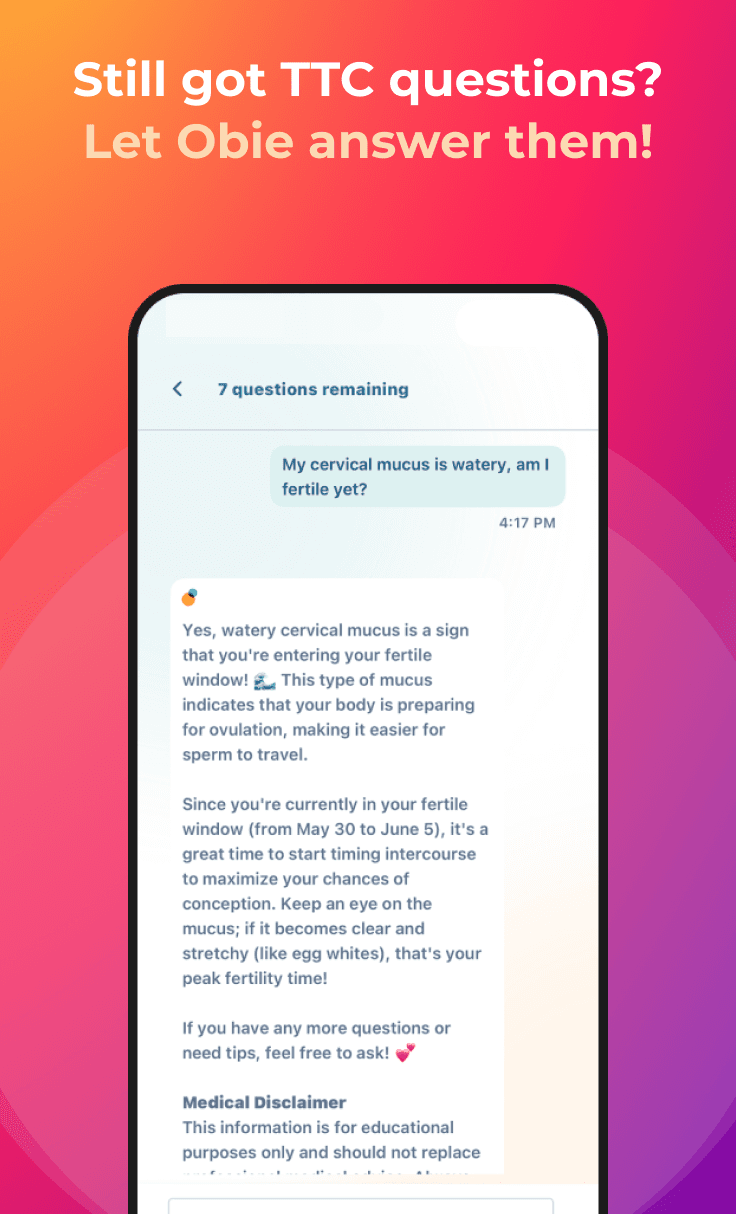Natural Family Planning (NFP)
Fertility Awareness
Obie Editorial Team
A: When avoiding pregnancy, abstaining from sexual relations during the fertile days may be helpful. When trying to conceive, having intercourse on the days of fertility may improve your chances. The egg can be fertilized for only 12-24 hours after ovulation. But the man's sperm can survive in the uterus for up to five to six days (though two to three days is more common). Therefore, the "window of fertility" is expanded to about 5 to 7 days before ovulation. When trying to get pregnant, it may be helpful to predict when this "fertile window" will occur. A woman's fertility works cyclically according to a predictable rhythm, all around the time of ovulation, and there are certain symptoms and signs that point to where in the cycle the woman is. The most obvious example is the menstrual period. A regular menstrual period indicates that ovulation has taken place about two weeks before. But there are other, less-obvious changes in a woman's body indicating the time in the cycle and fertility. These include:
- Changes in the basal body temperature (BBT)
- Changes in the mucus found around the cervix (CM)
- Changes in the position and texture of the cervix
While these changes may indicate fertility, they may be hard to interpret and are usually not used in the sympto-thermal method other than as a backup to the symptoms of temperature and mucus.








